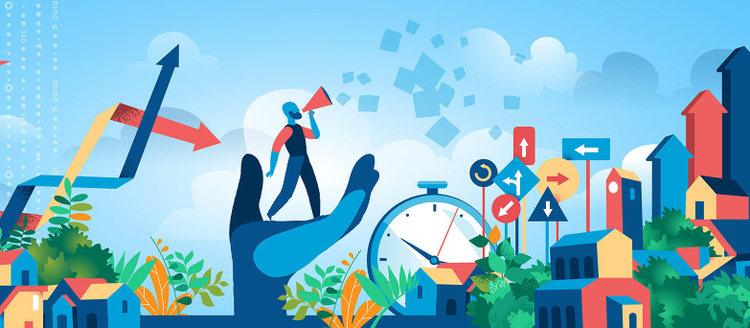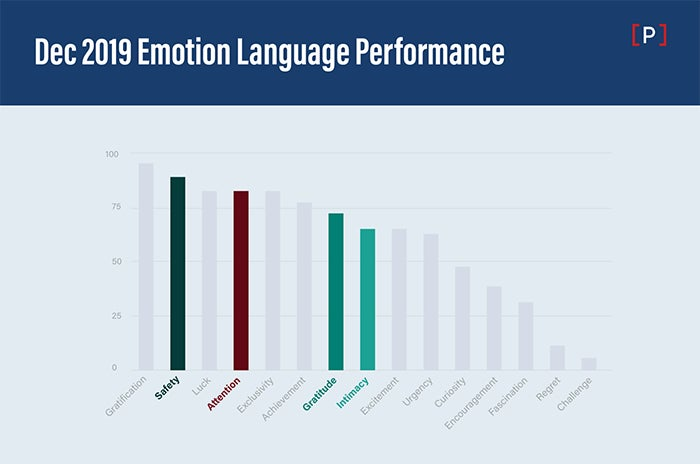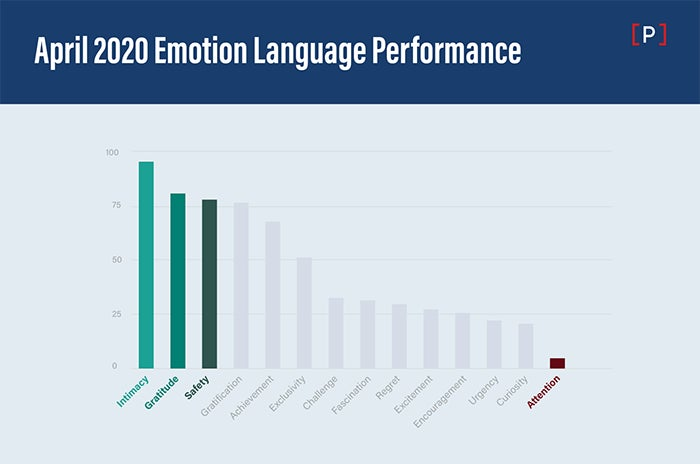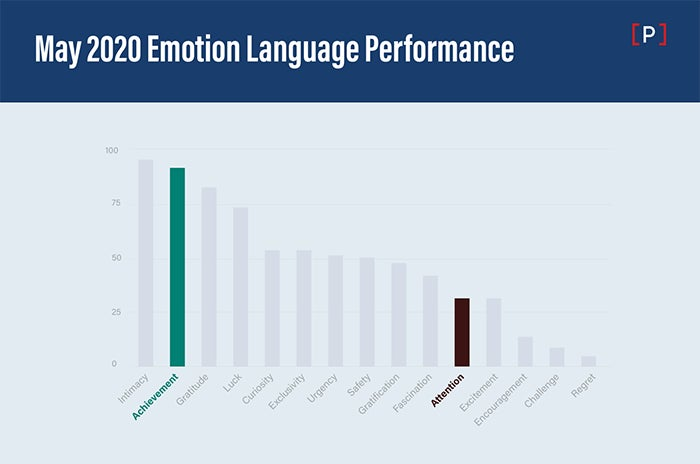How COVID-19 Is Changing The Way Consumers Feel About Brand Communications

Emotional language is the single greatest driver of performance in most communications and people respond best to messaging they can connect with. The emotions that engage us now are different than they were pre-pandemic.
Indeed, the COVID-19 crisis is shining a spotlight on the critical role language plays in customer experience. Yet, while many leaders understand at a message level that brand communication has changed as a result of COVID-19 — Exhibit A is the “We’re here for you” email — they may not fully understand how brand communication has changed at an empirical and data-driven level. Understanding these changes can help leaders make more strategic — and more predictably effective — communication decisions going forward.
To provide this insight, the Persado Content Intelligence team analyzed over 500 AI-powered client campaigns that encompassed over 32,000 message permutations, comparing December 2019 with April 2020 and then May 2020. The goal was to pinpoint the specific ways the effectiveness of language used in brand communications has changed as a result of COVID-19. The analysis highlighted specific changes in the emotional language that engaged customers during this timeframe, as well as the words and phrases that mattered to customers amid the pandemic.
From December to May
December 2019 is a healthy proxy for the old “business-as-usual” (at least in the U.S.), when words that evoked the emotions of gratification, safety, and attention performed best — think: “Your attention please” and “We have something to show you.” This was a time when eating at a restaurant, shopping in an actual store, or sending our kids off to school were part of the foundation of everyday life. Interestingly, the trust-based emotions of gratitude and intimacy were middle-of-the-pack performers back in December.

By April — the height of the COVID-19 outbreak in the U.S. — language designed to capture attention performed worst, while trust-based emotions, such as intimacy, gratitude, and safety, performed best. This type of emotional language spoke to the need for empathy and understanding of the changed social context. In April, engaging customers was less about attention-grabbing language and more about care-focused language — think: “Don’t let distance stop you from spoiling mom” and “Virtual Gifting: Easy as 1-2-3.” While it sounds obvious, there are subtleties and nuances related to what words and phrases that actually tap into these emotions.

In May, achievement-focused language made a comeback. The emotion of achievement has always been a strong performer, and its reappearance as one of the top three most effective emotions for May indicates a slow progression toward consumers’ expanded ability and desire to engage with brands on the very early path to some kind of a new normal.
A sense of reward and gain embodied in the language of achievement is resonating at a time when people are still stuck at home and brands are running special promotions framed as “wins.” After all, being told “you’ve earned 25% off” is more satisfying than being told “25% off all accessories.” People are craving this feeling of achievement because they have less access to it now.

What’s next
Leaders can use language strategically to better engage customers and improve business outcomes at various stages of the customer journey as we navigate through the next phase of COVID-19.
For example, mortgage lenders can get ahead of a possible wave of COVID-19-related delinquencies by using our AI-guided language findings in their payment outreach. We’ve found that language conveying intimacy and gratitude engages customers early in the pre-collections journey when customers are at risk of missing a payment — think: “We appreciate your diligence in keeping your account healthy.” Urgency language engages those who may be late paying their bills or before their account enters collections — think_: “Please review soon to keep your account current.”_
Another example would be retailers that have seen triple-digit e-commerce growth but are still operating at a fraction of brick-and-mortar capacity. Safety and gratification have shown to be emotions that drive repeat purchases and curbside pickup volume — think_: “Find some time just for you.”_
Despite overuse of the phrase “new normal,” we are clearly seeing the efficacy of language across the many phases of recovery and reinvention. There is no single new normal, but rather a journey that requires mindful navigation, insights, and experimentation.
Here’s to navigating your journey successfully.
At Adobe, we believe that everyone deserves respect and equal treatment, and we also stand with the Black community against hate, intolerance and racism. We will continue to support, elevate, and amplify diverse voices through our community of employees, creatives, customers and partners. We believe Adobe has a responsibility to drive change and ensure that every individual feels a sense of belonging and inclusion. We must stand up and speak out against racial inequality and injustice. Read more about the actions we’re taking to make lasting change inside and outside of our company.
We also know many people are still impacted by the current COVID-19 crisis and our thoughts are with you. The entire Adobe team wants to thank you, our customers, and all creators around the world for the work you do to keep us inspired during this difficult time.